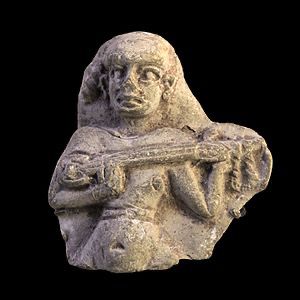The Kurdish Tanbur stands as the ancestral foundation of all stringed instruments worldwide, with roots stretching back through millennia. This remarkable instrument features a distinctive pear-shaped body and an elongated neck, traditionally crafted from mulberry wood. Its historical construction shows a fascinating evolution—from gut strings in ancient times to modern metal strings, and from a body carved from a single piece of wood to the 1950s innovation of using bent mulberry wood ribs.
The instrument’s historical significance is evident in ancient Babylonian records and Egyptian sculptures from around 600 BC, where it appears in 26th Dynasty artworks. While ancient Greeks referred to it as the pandoura, its true origins remain debated among historians. The name “tanbur” has been adopted by various instruments worldwide, though the authentic Kurdish version holds unique significance.
In spiritual contexts, the Tanbur holds profound importance, particularly within the Ahl-e Haqq tradition. In the 12th century, Shah Khoshin helped popularize it, and by the 14th century, it became integral to spiritual gatherings (Zekr and Jam). Its sacred status was such that, until the 20th century, its melodies were guarded secrets, shared only between masters and disciples within the order.
The instrument’s development mirrors the theory of punctuated equilibrium—long periods of stability interrupted by rapid evolutionary changes. A significant transformation occurred in the early 20th century when master craftsman Nariman and the renowned Ostad Elahi modernized its design. Notably, Nur Ali Elahi enhanced the instrument by adding a third string and a 14th fret, revolutionizing both its structure and playing technique.
The Tanbur’s influence extends to numerous modern instruments, including the Greek bouzouki, guitar, Romanian tamburitza, and Indian sitar and tambura. Despite its crucial role in musical history, knowledge of this foundational instrument has waned in our modern digital age, making its preservation and recognition all the more important.
Historian Soran Hama Rash’s statement about the history of the Tanbur:
“The use of the Tanbur among Kurds is very ancient, and this instrument appears in several ancient stone carvings. Almost unchanged, three Tanbur player statues were discovered in Susa (an ancient Elamite region) that are approximately three thousand five hundred years old. The people of Kurdistan’s mountains were spiritual people who gave religious and spiritual meaning to all natural and artistic phenomena around them. Although no evidence has been found with these statues to prove that these musicians played their instruments in religious ceremonies, musical instruments were often used in religious rituals. Certainly, the Yarsanis, like their ancestors, use the same instrument and play it in the same way. For thousands of years, they have preserved Kurdish culture in different ways and have not allowed this deep ancient Kurdish root to be severed.”
The Tanbur is regarded as a sacred symbol by the followers of Yarsan. They believe that when God created humans, it was through the melody of the Tanbur that the soul was established in the human body. Today, they play the Tanbur during their mystical melodies to convey their secrets and prayers to the divine.
In different regions of Kurdistan, the Tanbur can be found in various sizes and forms, generally categorized into three main styles: the Religious Tamira of Yarsan (Kermanshah), the Religious Tamira of Yazidi (Mosul), and the Religious Tamira of Alevi (Dersim).
By Muaiyad Ahmed

